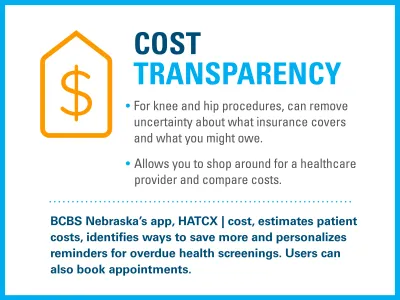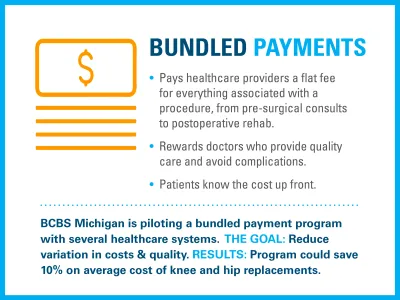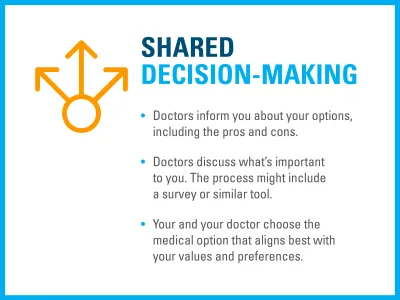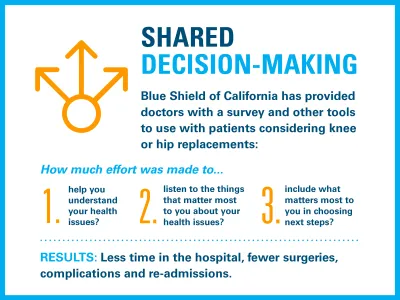Three trends making knee and hip replacements more affordable and higher quality

In 2017, hundreds of thousands of Blue Cross and Blue Shield members under the age of 65 had a knee or hip replacement. The surgery can change lives by reducing pain or improving mobility. It can also cost tens of thousands of dollars, depending on where a patient lives and where that surgery takes place. So finding high quality, cost-effective care is critical. Blue Cross and Blue Shield companies are developing innovative solutions to empower patients to find the right care.
Cost transparency
- For knee and hip procedures, can remove uncertainty about what insurance covers and what you might owe
- Allows you to shop around for a healthcare provider and compare costs
- BCBS Nebraska's app, HATCX|cost, estimates patient costs, identifies ways to save more and personalizes reminders for overdue health screenings. Users can also book appointments.
Bundled payments
- Pays healthcare providers a flat fee for everything associated with a procedure, from pre-surgical consults to postoperative rehab
- Rewards doctors who provide quality care and avoid complications
- Patients know the cost up front
BCBS Michigan is piloting a bundled payment program with several healthcare systems. The goal: Reduce variation in costs and quality. The results: The program could save 10% on average cost of knee and hip replacements.
Shared decision-making
- Doctors inform you about your options, including the pros and cons
- Doctors discuss what's important to you. The process might include a survey or similar tool
- You and your doctor choose the medical option that aligns best with your values and preferences
Blue Shield of California has provided doctors with a survey and other tools to use with patients considering knee or hip replacements. How much effort was made to: 1. Help you understand your health issues? 2. Listen to the things that matter most to you about your health issues? 3. Include what matters most to you in choosing next steps? Results: Less time in the hospital, fewer surgeries, complications and re-admissions.




